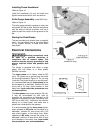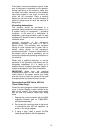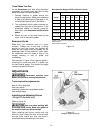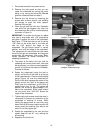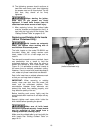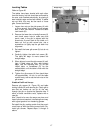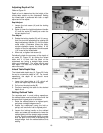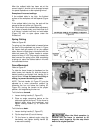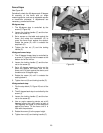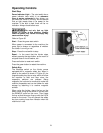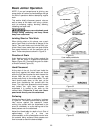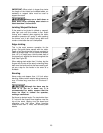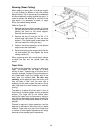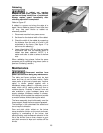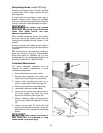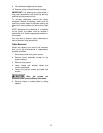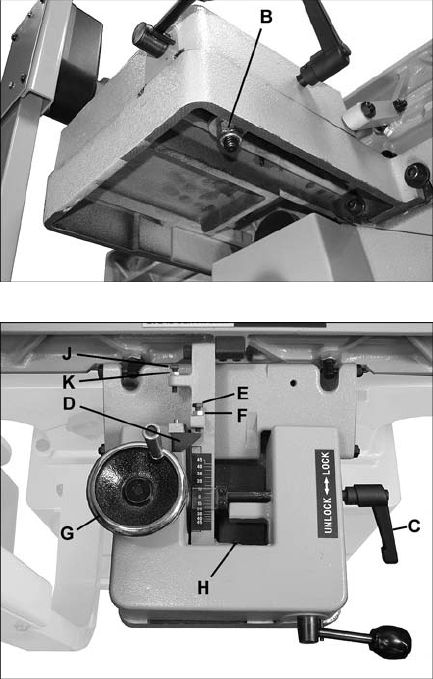
20
Fence Stops
See Figure 29.
Periodically check the 90 degree and 45 degree
tilt accuracy of the fence with an angle
measuring device, such as an adjustable square
or machinist's protractor. If adjustments are
necessary, proceed as follows:
90-degree stop:
1. The 90-degree stop is controlled by the
screw (E, Figure 29).
2. Loosen the locking handle (C) and the hex
nut on the screw (F).
3. Set a square on the table and against the
fence, and rotate the handwheel (G) to
move the fence flush against the square.
Rotate the screw (E) until it contacts the
stop block (D).
4. Tighten the hex nut (F) and the locking
handle (C).
45 degree forward stop:
1. The 45 degree forward stop is controlled by
a screw (H, Figure 29) that is located at the
bottom end of the link bar.
2. Loosen the locking handle (C) and the hex
nut on the screw (H).
3. Set a 45 degree measuring device on the
table and against the fence, and tilt the
fence until it is flush against the device, and
therefore at a 45 degree angle.
4. Rotate the screw (H) until it contacts the
casting below it.
5. Tighten hex nut (H) and locking handle (C).
45 degree back stop:
1. Flip the stop block (D, Figure 29) out of the
way.
2. The 45 degree back stop is controlled by the
screw (J).
3. Loosen the locking handle (C) and the hex
nut on the screw (K).
4. Use an angle measuring device set at 45
degrees beyond the right angle (a total of
135 degrees) and place it on the table and
against the fence. Tilt the fence until it is
flush with the protractor.
5. Rotate the screw (J) to the proper height.
6. Tighten hex nut (K) and locking handle (C).
Figure 28
Figure 29



